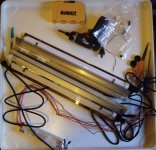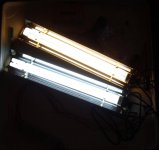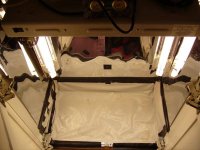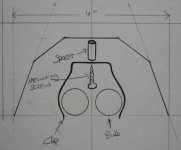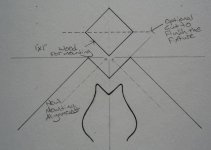Awesome! Thanks for the search tip.... last time I did that, only pre-made kits came up.
This link
Is for a 24" x 48" sheet for $60!
You could make 6 reflectors out of that and still have working material so you're not saving every scrap.
Or you could just buy one for $15.99.
Given the modest savings, shipping costs and time to fabricate your own, I'm thinking "pre-made" is looking pretty good. The full 55w kit is looking even better, in terms of mounting hardware and "no second trips to the hardware store" factor.



